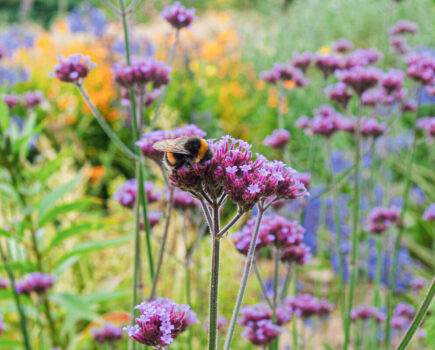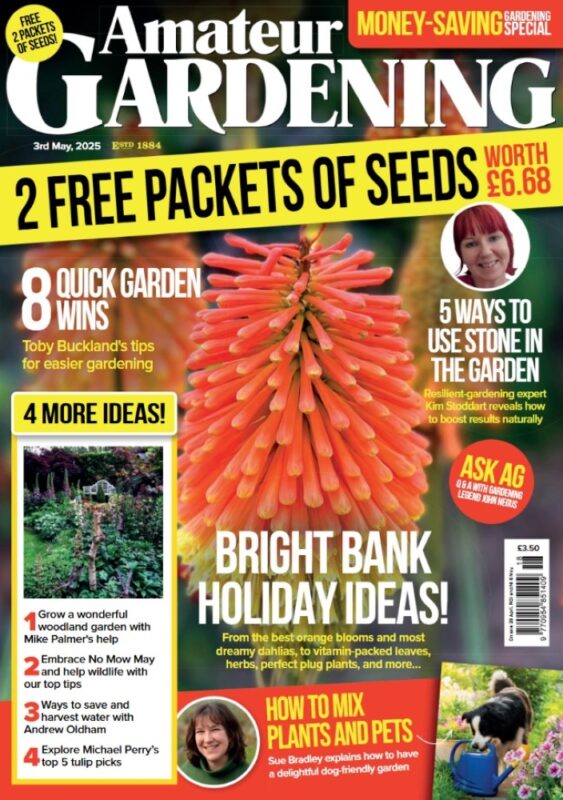These chatty birds offer more than meets the eye
Starlings are familiar visitors to many gardens and they are an incredible bird, not least because of their ability to flock together in numbers, called murmurations, which produce some of the most magnificent visual wonders of winter.
They aren’t always viewed positively though, and this dislike stems in part from their reputation for being quite greedy birds. It’s true that they can empty a bird feeder in minutes when a flock of them arrives in a garden, but this is because they are a species which has evolved to feed efficiently in large numbers for survival.
They make the most of any food source available and being omnivores, they eat a really varied diet, from seeds and fruit to a wide range of insects and even some vegetation.
Starlings up close

There are many more reasons to admire these birds. Why not start by taking a few minutes to look closely at a starling. Their breeding plumage, may appear black at a distance, but when close up their feathers actually have a wonderful iridescent sheen, a glossy collection of purples and greens. Their feathers are flecked with white, which is most noticeable in winter when their brown plumage is broken up by attractive bright white speckles.
Starlings are fantastic mimics and can make a huge variety of tweets, cheeps, clicks and burrs. They can often be heard copying household sounds around them such as alarms and machinery. This is more noticeable in the spring, when they are using their wide array of sounds to impress females.
Murmurations

At this time of year, our resident numbers are bolstered by many thousands of starlings from Eastern Europe, forced to move by colder weather and restricted access to food. Now is when the murmurations begin to excitingly build. This is the name given to the sky-filling mass of birds which come together and appears to move in a choreographed formation, giving us an amazing aerial acrobatic show.
It begins when birds join numbers at dusk to roost. Bigger numbers means more safety – the amazing movement of the murmuration can confuse predators such as birds of prey and make it more difficult to pick off individual birds.
These roosts start to form around November, sometimes earlier, and numbers grow over the weeks, so the early part of the new year can see some big groups – hundreds of thousands strong in some cases.
After the murmuration, the birds descend together, quickly, into their roost, which is anywhere that offers them protection from the elements and predators, including woodlands, reedbeds and cliffs, but also manmade structures such as piers.
Some RSPB reserves which feature great murmurations include Leighton Moss, Minsmere, Saltholme, Dungeness and St Aidan’s in England, Portmore Lough in Northern Ireland, Mersehead in Scotland and Conwy and Newport Wetlands in Wales.
But you can see them at many places across the UK – social media posts give an idea of where great numbers are occurring. And, of course, if you have starlings in your garden, don’t forget to admire them up close.
How to help starlings in your garden
Many people don’t realise that starlings are on the red list of endangered birds. While murmurations can feature huge numbers and many see these birds frequently in their gardens, starling populations have fallen dramatically since the 1970s, down by almost 70%. Research is ongoing to find out why this is happening, but in the meantime, there are ways to help our local starling populations.
-Have a real lawn and leave the grass a little longer – starlings love to pick for food like worms and insects in the grass during warmer weather.
-Hang feeders with suet or seeds without shells like sunflower hearts when there’s less natural food around in winter.
-Put up a nest box – those with a 4.5cm (2in) entrance are an ideal size for starlings
…………………….
For more information about starlings and how to help them and other garden birds this winter visit www. rspb.org.uk
Q&A

Q. I like helping out birds in my garden and enjoy seeing starlings, but how do I stop them eating all the food?
A. You can buy cages which will only allow smaller birds to use them and could hang another feeder without one to ensure bigger birds can eat too. Using nyjer seeds also deters starlings as their beaks are too big to eat such small seeds, but finches love them.
Q. When is the best time to see a murmuration?
A. They happen at dusk, just as the sun is going down and the birds are preparing to roost for the night. Numbers start to build from now – RSPB Newport Wetlands has great spectacles in November, but many other sites are a little later and/or get bigger as the winter goes on. Be prepared for it to get dark while you are out though, so ensure you take a torch and a friend and stay safe.
Find more tips, advice and articles like this at the Amateur Gardening website. Subscribe to Amateur Gardening magazine now





